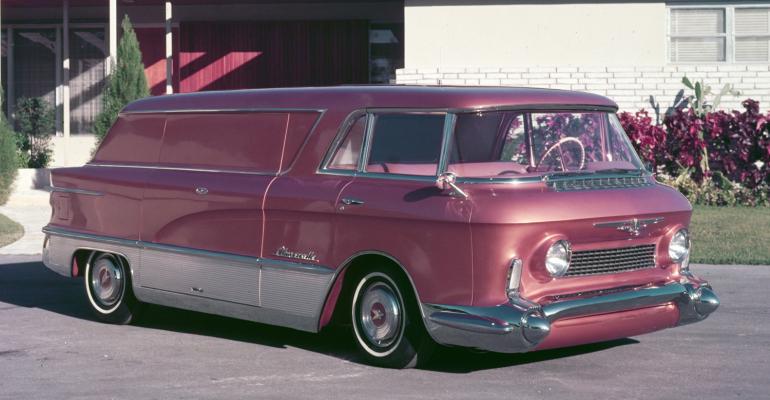75 Years Ago (May 1940): Output Up 24%; Hupp Skylark Bows; Ward’s Warns on Fifth Column; No Rubber Worries Yet
U.S. vehicle production in the first four months of 1940 is up 24.3%, to 1,761,478 units, from 1,418,243 in like-1939, according to Ward’s Automotive Reports’ data. General Motors, Ford and Chrysler account for 89.3% of January-April output, up from 88.7% a year earlier, with GM showing the largest gain. The No.1 automaker’s production share has increased to 42.2% in 1940 from 40.7% in 1939, mostly at the expense of Chrysler, as the No.3 automaker falls to 22.1% from 23.4%. Studebaker leads the independents with a 2.3% of 1940 output to date, up from prior-year’s 2.2%, trailed by Nash and International Harvester, among the leaders.
After much preparation, ’41-model Huppmobile Skylarks begin rolling off the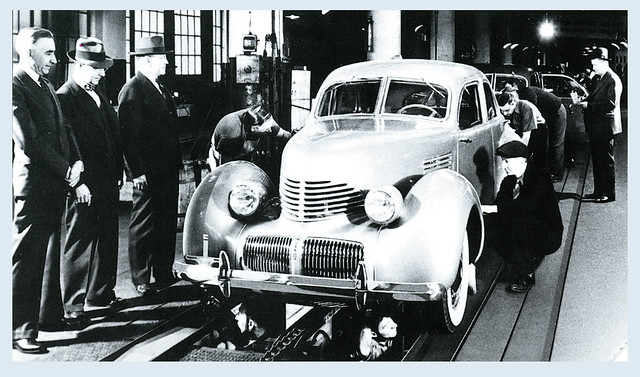 assembly line this month, albeit in limited numbers. A clone of the unit-body Graham Hollywood, the badge-engineered Skylark is built on the same assembly line at Graham’s Warren Ave., plant in Detroit, from modified Cord 810 body dies. Like the Hollywood, Skylark is offered in convertible and 4-door sedan body styles. It is powered by a 101-hp 245-cid (4.0L) I-6 engine.
assembly line this month, albeit in limited numbers. A clone of the unit-body Graham Hollywood, the badge-engineered Skylark is built on the same assembly line at Graham’s Warren Ave., plant in Detroit, from modified Cord 810 body dies. Like the Hollywood, Skylark is offered in convertible and 4-door sedan body styles. It is powered by a 101-hp 245-cid (4.0L) I-6 engine.
“Events of the past fortnight, epitomized by the stirring defense message of Mr. Roosevelt, have made an indelible impression on the nation and have developed an almost complete change in thinking,” says WAR, in its May 25 issue. “Suddenly, it appears, the nation is turning to the suspicion that we were being lulled into a beautiful sleep during the past few years by an unseen enemy, the notorious fifth column. Example after example is at hand of nations which have succumbed to such counsels and have been quietly taken over, and others that woke up too late, or almost too late.” According to the newsletter, “be prepared” is the “watchword” of the day.
Rubber company executives are expressing little concern over a possible shortage of crude rubber, following the spread of the “European War” to the Netherlands 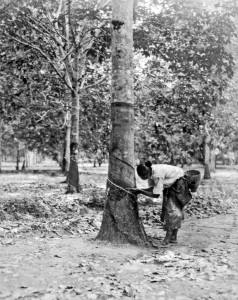 and the possibility that supplies from the Dutch East Indies may be interrupted. Some 162,282 long tons of crude rubber is on hand and another 102,557 long tons are in route. Based on March usage, that equals more than a 5-month supply. A relatively high inventory of tires also is on hand. Beyond that, “tire companies advise Ward’s that they can tool with very little difficulty for production of synthetic rubber almost as fast as chemical companies can supply the materials.” Synthetic rubber is not as elastic as natural rubber, but offers higher resistance to oil and other chemicals. The price is nearly double that of natural rubber, but will be lowered when volume production is achieved, WAR says.
and the possibility that supplies from the Dutch East Indies may be interrupted. Some 162,282 long tons of crude rubber is on hand and another 102,557 long tons are in route. Based on March usage, that equals more than a 5-month supply. A relatively high inventory of tires also is on hand. Beyond that, “tire companies advise Ward’s that they can tool with very little difficulty for production of synthetic rubber almost as fast as chemical companies can supply the materials.” Synthetic rubber is not as elastic as natural rubber, but offers higher resistance to oil and other chemicals. The price is nearly double that of natural rubber, but will be lowered when volume production is achieved, WAR says.
70 Years Ago (May 1945): Car Output Approved; Lighter Cars Seen; Rubber, Lead Shortages
With the war in Europe winding down, car and truck company executives, at a mid-May meeting with government officials, are authorized to build 214,678 cars and trucks for the civilian market in July-December. Car volume has been set at 2,146,756 units in the first 12 months after output resumes. Further, the War Production Board indicates those allotments could increase if the military needs less materiel than currently anticipated for continuing the war in the Pacific. Those makes with recently cancelled war contracts are expected to be the first to start production of new models based on modified ’42 tooling.
 Chevrolet and Ford are reported to be working on lighter-weight, more fuel-efficient and less costly cars to augment their post-war model lineups. According to WAR, many observers believe Chevy’s ’42 models represent the displacement limit in efficient 6-cyl. engine development, indicating that if more power is needed, an 8-cyl. engine is the likely configuration. That would leave room for a smaller 6-cyl. car. WAR also argues the “gradual yearly enlargement of Chevrolet automobiles has taken them out of the economical, popular price class; hence the need for a new lightweight model.”
Chevrolet and Ford are reported to be working on lighter-weight, more fuel-efficient and less costly cars to augment their post-war model lineups. According to WAR, many observers believe Chevy’s ’42 models represent the displacement limit in efficient 6-cyl. engine development, indicating that if more power is needed, an 8-cyl. engine is the likely configuration. That would leave room for a smaller 6-cyl. car. WAR also argues the “gradual yearly enlargement of Chevrolet automobiles has taken them out of the economical, popular price class; hence the need for a new lightweight model.”
Continued shortages of natural rubber and lead could hamper plans for the immediate resumption of civilian-vehicle output. To help relieve the rubber shortage, the Rubber Reserve Co. is harvesting all available guayle shrubs, originally planted by the Department of Agriculture in 1942 as hedge against a critical supply shortage of rubber from abroad. The longer the plants grow, the more natural rubber can be harvested from them. On the other hand, the shortage of lead already is making it hard to produce enough batteries for military needs and a shortage of civilian replacement batteries is widespread. The War Manpower Commission is attempting to channel workers formerly employed in war-materiel production to lead mining operations to increase the supply.
60 Years Ago (May 1955): Little Three Push Used; Ford’s E-F, E-M; V-8s Surge; GM L’Universelle Detailed
“The Big Three may be taking a giant’s slice of the new-car market, but they’re meeting with strong opposition from the Little Three on the used-car front,” says WAR, in a May 2 front-page story. Studebaker-Packard, American Motors and Kaiser Motors account for 8.7% of the 906,000 used cars retailed by franchised new-car dealers in March, nearly double their 4.5% new-car market share. Their  share of first-quarter used-car sales is 8.3%. That pace is expected to continue at least through June, as Nash and Packard initiate factory-backed used-car programs. Commencing May 1, Nash is endorsing dealer-issued used-car guarantees, backing them up with a $1 million indemnity bond. At the same time, Packard’s Heritage Program offers a 100% warranty on the engine and other drivetrain components on late-model, 1-owner Packards for the first 2,000 miles (3,219 km) or 45 days of ownership.
share of first-quarter used-car sales is 8.3%. That pace is expected to continue at least through June, as Nash and Packard initiate factory-backed used-car programs. Commencing May 1, Nash is endorsing dealer-issued used-car guarantees, backing them up with a $1 million indemnity bond. At the same time, Packard’s Heritage Program offers a 100% warranty on the engine and other drivetrain components on late-model, 1-owner Packards for the first 2,000 miles (3,219 km) or 45 days of ownership.
In the latest Ford product planning news, indications are a new car code-named E-F will be based on the all-new ’57-model standard-size Ford tooling, while an E-M variant will be derived from the new Mercury body shell. Both models are slated to bow in the ’58 model year. The E-F will be priced above the Ford Fairlane, while the E-M will sell in bracket higher than the Mercury Montclair. The arrangement will be patterned somewhat like GM’s A-, B-, C- and D-body lineup.
According to a Ward’s survey, 73.5% of cars built in the U.S. in first-quarter 1955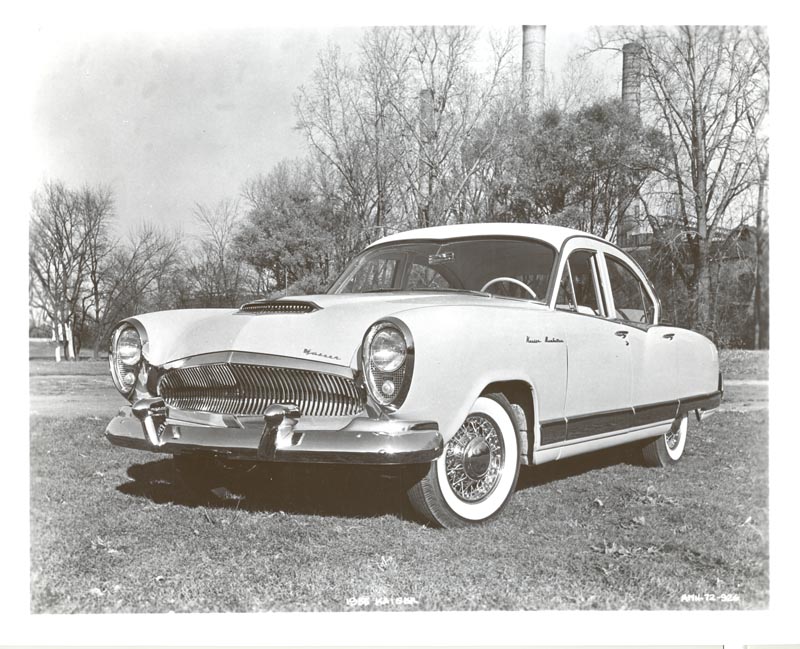 were powered by a V-8 engine, a total of 1,564,808 units. A 6-cyl. engine was installed in 564,178 cars, a 26.5% share, while Kaiser installed a 4-cyl. engine in 600 Jeep station wagons. It is the largest V-8 share in the post-war period, and up from 56.3% in entire 1954, when the I-8, used then by Packard and Pontiac, also went into 4.7% of cars. The I-6 accounted for 39.0% of 1954 output, while just 1,200 Jeep models sported a 4-cyl. engine. Currently, Kaiser is the only automaker without a V-8, although both Nash and Hudson offer an optional V-8 supplied by Packard, in combination with Packard’s Ultramatic automatic transmission.
were powered by a V-8 engine, a total of 1,564,808 units. A 6-cyl. engine was installed in 564,178 cars, a 26.5% share, while Kaiser installed a 4-cyl. engine in 600 Jeep station wagons. It is the largest V-8 share in the post-war period, and up from 56.3% in entire 1954, when the I-8, used then by Packard and Pontiac, also went into 4.7% of cars. The I-6 accounted for 39.0% of 1954 output, while just 1,200 Jeep models sported a 4-cyl. engine. Currently, Kaiser is the only automaker without a V-8, although both Nash and Hudson offer an optional V-8 supplied by Packard, in combination with Packard’s Ultramatic automatic transmission.
Sales of the revolutionary new front-wheel-drive L’Universelle specialty van could, according to industry sources, reach 25,000 annually. Available in cargo and passenger variants, L’Universelle has undergone extensive changes in chassis and body design since appearing as a GMC concept vehicle in the 1954 Motorama traveling auto show. The production version will be powered by a front transverse-mounted V-8, with a HydraMatic transmission mounted to the side of the engine and connected through the use of “novelty gearing.” Torsion bars will be employed in the front suspension. Reports indicate conventionally hinged side cargo doors will be used in place of the 2-piece fold-up door seen on the concept model. A typical tailgate and transom will used at the rear.
50 Years Ago (May 1965): Ragtop Output Up; Excise Tax Refunds; April’s Record Sales Pace; VW Adds Mexico Plant
U.S. production of convertibles in the ’65 model year will reach a record 560,000 units, forecasts WAR, based on the same 6.4% penetration rate seen in ’64, when a record 500,935 ragtops were built. The higher unit volume is attributed to a higher ’65 production run, forecast at 8.8 million units. Convertible output in the ’65 run through Mar. 31, 1965, totaled 282,758 units, up from 277,631 in like-’64. Production is seen increasing rapidly with warmer temperatures. The newsletter points out increased installations of seat belts may help boost ragtop sales by “alleviating the fears of some potential buyers of being thrown from an open car in the event of a crash.”
a record 500,935 ragtops were built. The higher unit volume is attributed to a higher ’65 production run, forecast at 8.8 million units. Convertible output in the ’65 run through Mar. 31, 1965, totaled 282,758 units, up from 277,631 in like-’64. Production is seen increasing rapidly with warmer temperatures. The newsletter points out increased installations of seat belts may help boost ragtop sales by “alleviating the fears of some potential buyers of being thrown from an open car in the event of a crash.”
Automakers say they will refund any cut in the federal excise tax on cars enacted between May 15 and the date on which a final bill is signed. Responding to a Presidential request, The House Ways and Means Committee has moved to trim the tax on new cars to 7% from 10%, retroactive to May 15. However, while the President wants to make the tax permanent at 5% by 1967, the House panel recommends trimming it to 4% on Jan. 1, 1967, cutting it to 2% in 1968 and then eliminating it in 1969.
Although April U.S. new car sales of 800,335 units did not quite match the any-month record of 817,180 posted in March, the daily selling rate hit an all-time high of 30,782 units. That was 1.7% above the 30,266-a-day pace seen in March. The May 1 start of a major Chevrolet sales contest is blamed for curtailing deliveries in the Apr. 21-30 period. May sales also are forecast at 800,000-plus, a level not seen prior to March. Car sales for the year are expected to top 8.6 million units, up from 7.6 million-plus in 1964, when a fall contract strike hamstrung GM.
 Construction of Volkswagen’s new 1.45 million sq.-ft. (134,700 sq.-m) complex in Puebla, Mexico is on track for a 1966 opening. VW is investing $80 million in the facility where it will build 2,500 cars monthly with a workforce of 5,000. Initially, local content will be 70%, with further increases planned. Until the new site opens, VW will continue assembling Type 1 (Beetle) cars from CKD kits and local parts at small plants near Mexico City.
Construction of Volkswagen’s new 1.45 million sq.-ft. (134,700 sq.-m) complex in Puebla, Mexico is on track for a 1966 opening. VW is investing $80 million in the facility where it will build 2,500 cars monthly with a workforce of 5,000. Initially, local content will be 70%, with further increases planned. Until the new site opens, VW will continue assembling Type 1 (Beetle) cars from CKD kits and local parts at small plants near Mexico City.
25 Years Ago (May 1990): Profits Fall; Airbags Advance; A-Body to Stay; Canada Ports Blockaded; Iacocca Tells Viper Plan
Big Three automaker profits fall to a combined $1.3 billion in the first-quarter, down 64% from $3.5 billion-plus in like-1989. Lower production volumes and higher incentive costs are blamed for the downturn. Individually, GM profits fall 54%, to $710 million; Ford is off 69%, to $506 million and Chrysler plummets 80%, to $71 million. Chrysler’s profit, derived mostly from its financial arm, surprises analysts, who had expected it to break even, at best. The heavy incentives are costing Ford an average of $1,000 per vehicle, or $4 billion yearly, company executives tell stockholders at the company’s annual meeting. Chrysler says its incentives are running $1,100 per vehicle this year and GM puts per-unit costs in excess of $1,000.
Standard-equipment driver and front-passenger airbags are on the horizon, but some analysts question the timing. Ford says it will equip all of its North American cars with full-front airbags by the mid-1990s. But GM and Chrysler hedge their bets, saying passenger-side systems are much more difficult to engineer than one for the driver. Supplier problems also figure into the timetable. Already Ford has had to postpone the passenger airbags in Lincoln and Continental cars due to a shortage stemming from explosions that have shut down plants making the propellant. Diane K. Steed, former head of the National Highway Traffic Safety Admin., says 1997 or 1998 is a more realistic timetable. She also says smaller Japanese and South Korean automakers lag far behind U.S. producers in implementing airbag technology.
GM plans to continue building some of its aging front-drive A-body midsize cars, first introduced in ’82, well into the 1990s. According to internal documents, Buick Century and Oldsmobile Ciera will be freshened in ’93 and continue in 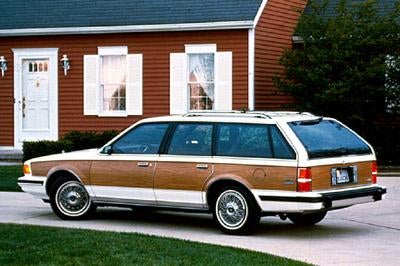 production in sedan and wagon body styles at the Oklahoma City plant. The Pontiac 6000 is slated to be dropped at the end of the ’91 run, while the Chevy Celebrity, offered only as a wagon, likely will be phased out by the time the Ste. Therese, QE, Canada, plant undergoes changeover to the ’94 F-body Camaro/Firebird.
production in sedan and wagon body styles at the Oklahoma City plant. The Pontiac 6000 is slated to be dropped at the end of the ’91 run, while the Chevy Celebrity, offered only as a wagon, likely will be phased out by the time the Ste. Therese, QE, Canada, plant undergoes changeover to the ’94 F-body Camaro/Firebird.
Numerous U.S. and Canadian car plants are shut down several days during the week of May 23, due to lack of parts as Canadian independent freight-truck drivers blockade border crossings in Ontario and Quebec. The drivers are protesting what they consider the unfair advantages of U.S freight trucks operating Canada, such as lower fuel, licensing and insurance costs. Although a Transport Canada negotiates an end to the blockade by Friday, the protests cost Ford some 7,000 units of lost production, GM, 3,000, and Chrysler 400 units.
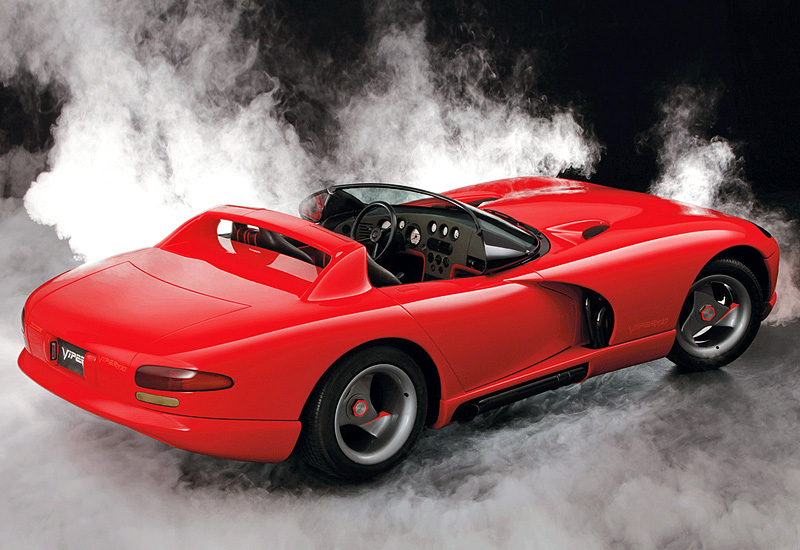 Chrysler Chairman Lee A. Iacocca tells shareholders the company will begin building the Viper high-performance sports car in January 1992. It will be powered by a Lamborghini-engineered aluminum-block V-10, but the low annual production volume will not hurt the company’s CAFE numbers, according to Iacocca. First-year output is seen in the 200-500 unit range, but 5,000 easily could be produced with maximum annual output of as many as 10,000 cars. He also says that while the upcoming LH sedans will be powered by a V-6, a V-8 or V-10 would be a likely option.
Chrysler Chairman Lee A. Iacocca tells shareholders the company will begin building the Viper high-performance sports car in January 1992. It will be powered by a Lamborghini-engineered aluminum-block V-10, but the low annual production volume will not hurt the company’s CAFE numbers, according to Iacocca. First-year output is seen in the 200-500 unit range, but 5,000 easily could be produced with maximum annual output of as many as 10,000 cars. He also says that while the upcoming LH sedans will be powered by a V-6, a V-8 or V-10 would be a likely option.

